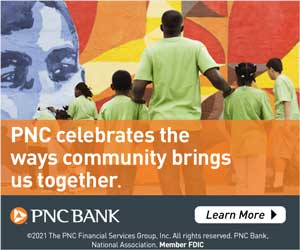By Breanna Cooper
EVERY FAMILY HAS A unique history. Thanks to the popularity of websites like Ancestry.com and television shows such as “Who Do You Think You Are?” Americans are enamored with learning more about the ancestors that make up their family tree. While word of mouth and family Bibles can be a wealth of knowledge, you may be missing important names and information that can help you complete your family history. These apps and websites can help the genealogist in the family create an in-depth family tree.
MyHeritage
Since 2003, MyHeritage has helped 109 million users around the world discover their family history and add documents, such as census records and birth certificates, to their family tree. Founded by Gilad Japhet, MyHeritage now offers DNA analysis that can estimate ethnic groups and geographic locations that your family may have come from, as well as help users connect with new family members. With a free phone app, users can easily build their family tree on the go.
HistoryPin
Like any form of history, family stories passed down through the years often need context to help you understand them. HistoryPin allows users to add context to their own family history by sharing the history of communities through photographs. Users can upload photos to the website to show the evolution of communities and neighborhoods throughout the years. By searching keywords, users can find photos of specific neighborhoods, businesses and historic moments.
Chronicling America
Chronicling America is an online newspaper archive sponsored by the National Endowment for the Humanities and the Library of Congress. Users can find newspaper articles from 1789-1963 to find more information about a specific person or an event. The website directs user to the United States Directory for Papers for articles from 1690-present. Users can filter their search for specific dates, names, state and name of a specific newspaper to find results that can help them learn more about their ancestors. The archive contains newspapers from Puerto Rico and offers digitized pages in 19 languages.
23andMe
Ancestry’s 23andMe DNA test helps individuals not only determine their national origins but can also help them understand their health risks. After completing an at-home test, which consists of completing a saliva-collection kit, participants send their kit to a lab where it is genotyped and tested by medical experts. In three to five weeks, participants can log onto Ancestry to view their results, which include information about genetic health risks and their carrier status for certain diseases, such as Tay-Sachs disease. If potential health risks are found, 23andMe helps individuals assess their likelihood of developing certain diseases or health problems and take the steps to minimize those risks.
FamilySearch
FamilySearch strives to help connect families across generations. The free service helps users not only build their family tree, but to store photos and memories of family members. After a user has added an individual to their family tree, the website allows them to upload photos and “tag” that person in their photo collection, as well as upload audio clips to share stories of the person they added. FamilySearch helps younger family members hear firsthand accounts of family members they never had the chance to meet.
Find-a-Grave
When you finish putting together your family tree, you can use Find-a-Grave to find individual’s cemetery plots. Created in 1995 by Jim Tipton, Find-a-Grave uses longitude and latitude to help users find the location of millions of graves that have been added to the website. Members can upload photos and biographies of the dead, along with photos of the cemetery plots and links to online obituaries. Members can also add family trees to profiles to connect family members.










